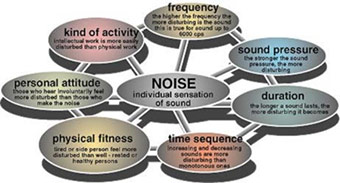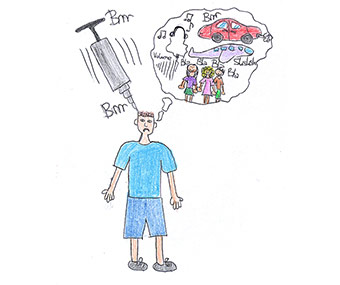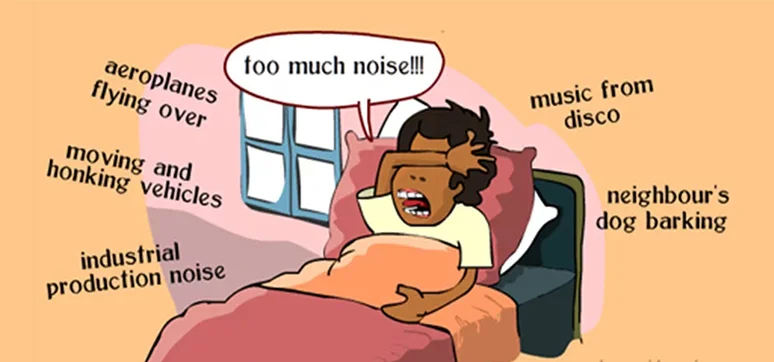On average, we spend about 90 per cent of our time indoors, thus it’s imperative that we have an indoor environment that is conducive to the general well-being of the occupants. There are a number of factors that influence the indoor environment in any given building. Be it an office space or a house. For instance – Indoor air quality, natural lighting of the indoor spaces, clean ventilated and well-lit interiors, bereft of annoying outdoor noises. Windows and façade play an enormous role in ensuring the building’s indoor environment is healthy. They are responsible for ensuring that the interior spaces are well-lit and adequately ventilated. And while ensuring this prime objective they take up the dual responsibility of acting as a barrier between inside and outside and keep unsolicited intruders such as Noise, air pollution, rain, and humidity at bay. It is of utmost importance that a building façade is designed with a holistic approach keeping the wellbeing of occupants in mind.
How detrimental an unhealthy building can be in case its windows or façade are not sensitive to the health requirements of its occupants? The key facts shall be discussed in 2 consecutive issues of the Window and façade magazine. This issue shall particularly address the noise hazard on human wellbeing.
Noise

It is customary to call any undesirable sound “noise.” The disturbing effects of noise depend both on the intensity and the frequency of the tones. For example, higher frequencies are more disturbing than low ones. Pure tones are more disturbing than a sound made up of many tones.
It is one of the foremost responsibilities of the fenestration system of the building to keep this undesirable element out
Effects Of Noise On Human Health
Unrestricted noise can cause:

- Loss of concentration,
- Hypertension and vasoconstriction
- Mood swings/ annoyance/ and sleep disturbance
- Palpitations
- Permanent hearing loss or hearing disorders of irreversible nature.
- Changes in the immune system and birth defects have been attributed to noise exposure.
Sound is well transmitted into the uterine environment thus causing immense and irreparable damage to the fetus (Fig 2). The U.S. Environmental Protection Agency authored a pamphlet in 1978 that suggested a correlation between low-birth-weight babies (using the World Health Organization definition of less than 2,500 g) and high sound levels, and also correlations in abnormally high rates of birth defects, where expectant mothers are exposed to elevated sound levels, such as typical airport environs. Specific birth abnormalities included harelip, cleft palate, and defects in the spine.

When young children are exposed to speech interference levels of noise on a regular basis (the volume of which varies depending on the distance and loudness of the speaker), they may develop speech or reading difficulties, because auditory processing functions are compromised. Children continue to develop their speech perception abilities until they reach their teenage years. Evidence has shown that when children learn in noisier classrooms, they have a more difficult time understanding speech than those who learn in quieter settings.
In a study conducted by Cornell University in 1993, children exposed to outside noise in learning environments experienced trouble with word discrimination as well as various cognitive developmental delays. In particular, the writing learning impairment known as dysgraphia is commonly associated with environmental stressors in the classroom.
The effect of high noise levels on small children has been known to cause physical health damage as well. Children from noisy residences often possess a heart rate that is significantly higher (by 2 beats/min on average) than children from quieter residences.
Children from noisy residences possess a risk of higher heart rate

It is the duty of the window/façade contractor and the responsibility of the architect to consider the acoustic performance of the building, particularly in circumstances where external noises may be significant or maybe a nuisance
To scale down an existing noise nuisance perceived as loud, 2 fundamental physical effects of wave propagation may be exploited:
Sound isolation by REFLECTION:
The sound energy is not dissipated or converted to a different energy form, but its direction of propagation is changed by reflection.
Sound isolation by ABSORPTION:
In this case, the sound energies are essentially converted into heat (dissipation)
Influencing Factors:
- Glass performance/spandrel panels
- Area of the Fenestration product
- Frame Performance
- Air tightness of
- Installation
- The opening frame
- Building Height
Typical Glass Values
Double glazing was originally developed to reduce heat loss through windows. However, by judicious design, it is possible to achieve moderately high acoustic insulation. A double-glazed window with 4/12/4 will typically achieve the minimum 29dB for residential doors.
| Typical Glass Unit | RM | RW | RTRA | Effect of Frame |
|---|---|---|---|---|
| 4|12|4 | 29 | 31 | 25 | Negligible |
| 6|12|6 | 30 | 33 | 26 | Negligible |
| 10|12|4 | 34 | 36 | 29 | Negligible |
| 10|12|6 | 34 | 38 | 32 | Negligible |
| 10|12|6.4 | 36 | 40 | 34 | Significant |
Table 2: Acoustic performance of glass units source Pilkington’s, for the actual performance of glass units, consult your glazing supplier.
- RM (Mean Value) is the simplest approach, involving an arithmetic mean of the sound reduction indices measured at the 16 1/3 octaves
- RW (Weighted) This is the most common way to classify sound insulation. It is biased towards the particular frequencies that humans are particularly sensitive to, giving an indication of the perceived acoustic performance.
- RTRA (Traffic noise reduction) is biased towards the lower frequencies and is used to compare products where the external noises arise from mainly lower frequency road traffic.
Noise control should be taken into account from the beginning of the planning process for a new building:
The frame, glass, and special installation techniques should be selected so that all sources of disturbance can be provided with effective vibration isolation.
While this issue deals with noise as a health deterrent and how effective fenestration can help in combating that, the next issue will talk about the sick building syndrome and the role of fenestration in avoiding that. Until then….
REFERENCES:
- Noise Control – A Guide for Workers & Employers Occupational Safety And Health Administration – US Department of Labor
- Building Regulations Approved Document Smart Building Systems
- Textbook of Medical PhysiologyArthur C Guyton
- Robbins Pathologic Basis of Disease Vinay Kumar, Abdul K. Abbas, John C. Aster














